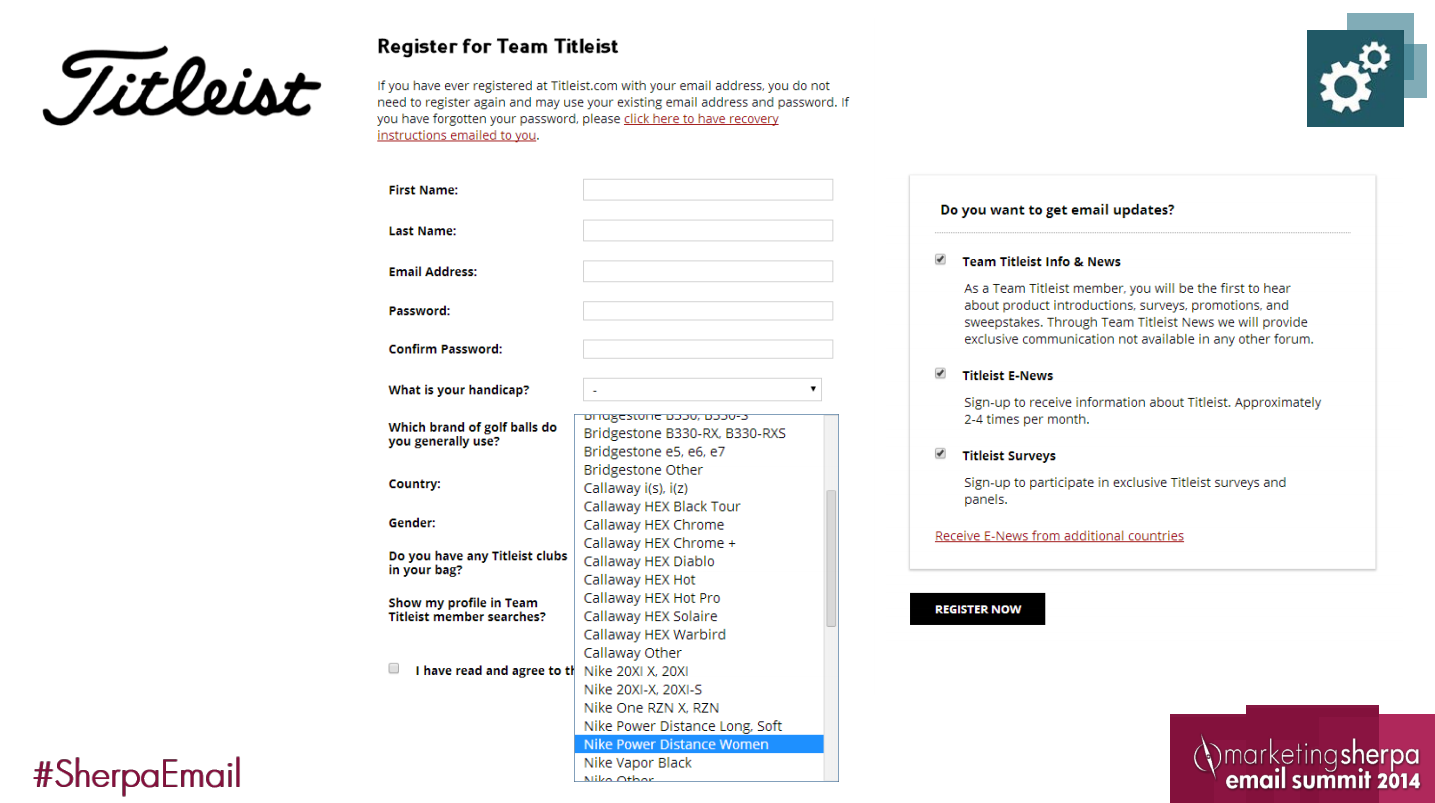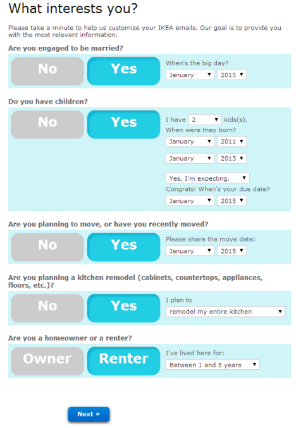Email Personalization: Craft forms with purpose
At MarketingSherpa Email Summit 2014, Eventful, an online retailer of concert and event tickets, presented how it personalized and segmented its email campaigns to achieve a 66% increase in purchases.
To deliver a personalized email experience to its 21 million subscribers, Eventful’s Paul Ramirez and Ryan Blomberg created a recommendation engine that provided alerts about performers and events their subscribers wanted to hear about, focusing especially when a performer of interest was coming to their town.
You can watch their full presentation to see how the team designed and implemented this revolutionary technology, but for this blog post, we wanted to showcase how to provide a more one-on-one experience when you don’t have a team of engineers to design an entirely new technology for your company, such as Eventful had for its recommendation engine.
In this video, Pamela Jesseau, Senior Director, Marketing, MECLABS, and the Eventful team discuss how to craft forms in your email sign-up process and profile setup that will let your customers tell you more about themselves.
Ultimately, the goal is to use this information to craft a personalized and segmented email experience for your subscribers, minus the fancy (and oftentimes expensive) technology.
You’ll see two great examples of effectively using forms to gather insightful knowledge about your customers as well as how to fit your registration form into the customer journey.
Tip #1. Make each form field count
Titleist offers a brief form that dives into information they want to know about their customers.
In this form, the company asks for generic information, like the potential customer’s name and email address, but it also asks golf-related questions, such as handicap, what kind of golf balls the potential customer currently uses and if they already own Titleist golf clubs.
You can imagine the types of content certain subscribers would receive as a result of this form. Knowing what type of golf balls someone uses, even if it’s not the Titleist brand, could lend to some unique promotional opportunities.
Also, knowing the handicap could help with understanding the player’s level of skill, offering different content based on amateur or more advanced playing levels.
Tip #2. Offer a robust profile to gain deeper insights
For IKEA, after a new email subscriber fills out a standard email sign-up form, they are given the opportunity to fill in their personal profile, loaded with questions designed to allow IKEA to gain a deeper look into the subscriber’s needs and wants.
For example, this section of the profile asks if the subscriber is engaged, has children, is planning on moving or has moved, is planning a kitchen remodel and if they are a homeowner or a renter. This provides IKEA with a gold mine of information, as long as the subscriber fills it out.
Pamela urges that these forms should always be tested, as asking for too much personal information could lead to anxiety for the customer, resulting in no form fills for you.
You might also like
Email Summit 2015 [See more inspiring case studies like Eventful’s at our next event]
Optimizing Web Forms: How one company generated 226% more leads from a complex Web form (without significantly reducing fields) [MarketingExperiments Web clinic]
2 Vital Questions Every Marketer Should Ask of Lead Gen Forms [More from the blogs]
Lead Generation: Is your registration form part of the customer journey? [More from the blogs]
Categories: Email Marketing Email Marketing, email sign-up, form fields, lead gen forms, web forms












Ikea being Ikea can ask all the questions they want, but let’s face it, most online retailers are reluctant to even ask for more than the visitor’s email address in fear of driving customers away from the site. Implementing eCommerce personalization applications enables online retailers to offer their visitors a personalized shopping experience without asking too many questions. A lot of information can be collected about a visitor without the need to ask for the data: where are they from, what did they search on Google, what is the weather where they are right now, what are their buying patterns, do they like particular brand or are they price sensitive and much more.